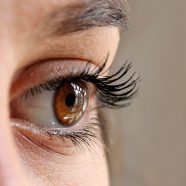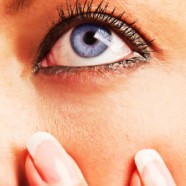Botox for Blepharospasm: What You Should Know
Do you suffer from blepharospasm? Characterized by chronic, uncontrolled twitching of one or both eyelids, this is a somewhat rare condition that affects roughly one in every 20,000 Americans. However, that still translates into some 15,900 individual cases of blepharospasm. The good news is that most cases of blepharospasm go away on their own, without the need for outside medical attention or treatment. But there are times when it remains long after, sometimes for months or even years. While blepharospasm rarely poses any need for immediate attention, it can still adversely affect a person’s quality of life. The constant twitching of the eyelid can increase stress and fatigue. To make matters worse, there’s no easy for individuals to control this twitching. To better understand the role Botox plays in the treatment of blepharospasm, you have to take a closer look at this condition. Blepharospasm is a focal dystonia that involves involuntary contractions of the eye muscles. There are half a dozen different muscles in the eyes. These “extraocular” muscles are responsible for controlling eye movement, along with an additional muscle that controls eyelid elevation. When these muscles twitch uncontrollably for long periods of time, it creates the condition known as blepharospasm. So, how exactly does Botox treat blepharospasm? Botox is the brand name for a specific toxin that, when used in moderation, is completely safe and even beneficial for various medical and cosmetic applications. It works by temporarily paralyzing local muscles, forcing them to relax. When muscles suffer from chronic twitching – the characteristic symptom of blepharospasm – they tpically remain in a constricted state. Botox injects eases this constricted state, allowing the affected muscles to relax; thus, offering relief of the symptoms associated with blepharospasm. As explained here, the United States Food and Drug Administration (FDA) has approved Botox for use in the treatment of blepharospasm (among many other conditions). The FDA’s press release goes on to say that “no definitive serious adverse event reports of distant spread of toxin affect” have been discovered when using Botox for blepharospasm. Long story short, Botox offers a safe and effective way to treat this bothersome condition, assuming it’s performed by a licensed and experienced practitioner. If you suffer from blepharospasm, talk with Dr. Sherbert to learn more about Botox injections and whether or not it’s the right form of treatment for...
Read MoreThe Surprising Benefits of Blepharoplasty
Blepharoplasty is a form of plastic surgery that involves correcting defects, abnormalities, and defects (functional or cosmetic) of the eyelids. While the exact process varies depending on the particular type of blepharoplasty being formed, most involve the removal of excess skin and fat from the periorbita via a small excision, while reinforcing the surrounding muscle and tendon tissue. It’s a simple procedure that can drastically improve the quality of life for men and women of all ages. Has your vision been impaired by sagging, drooping eyelids? As we age, gravity will begin take a toll our bodies, pulling down the skin and causing it to sag. Normally, this doesn’t have any adverse effects regarding functionality. When the skin begins to sag around the eyelids, though, it can cover the top part of the eyes, restricting the individual’s vision and lowering his or her self-esteem. Conditions such as this are easily corrected through the use of blepharoplasty. A plastic surgeon can remove the excess skin on and around the eyelids, restoring the patient’s vision back to its normal state. Blepharoplasty can also be used to remove excess fatty deposits on the eyelids. It’s not uncommon for small, mole-like deposits of fat to form on the eyelid. While they are typically harmless and pose little-to-no threat to the individual’s health, they can affect a person’s quality of life. The presence of these fatty deposits can make a person feel self-conscious, forcing them to stay indoors and avoid social situations. The good news is that such deposits are easily removed through plastic surgery. The surgeon will take a small scalpel (or other preferred cutting instrument) and, after giving the patient anesthesia, remove the fatty deposits. Are you tired of people always saying you look tired just because you have bags under your eyes? These bags often form as a lack of sleep, and while most go away without the need for medical treatment, some remain. Whether you have bags under your eyes or over your eyes, these can be corrected with blepharoplasty. A cosmetic plastic surgeon can tighten the skin around the bags to the point where they are no longer noticeable. Of course, many people seek blepharoplasty for its ability to create a more youthful look. Even if there’s nothing “functionally” wrong with your eyelids, you may still want to blepharoplasty for the simple fact that it can take years off your appearance. Skin wrinkles, sagging and drooping can all be corrected through the use of blepharoplasty. The plastic surgeon will lift and tighten the skin so there are no bags. This isn’t going to completely eliminate your facial wrinkles, but it will certainly make them look less noticeable; thus, making you look...
Read MoreA Brief Overview of Blepharoplasty and Its Benefits
Blepharoplasty is another name for eyelid surgery. This type of surgery has been around for centuries and it is performed to correct defects and deformities of the eyelids. The most common reasons for a blepharoplasty include reducing bags under the eyes, decreasing puffiness in the eyelids, improving the contour of the upper eyelids and smoothing out excess skin and wrinkles around the eyes. Not only does this surgery improve the aesthetics of the eyelids, it can also relieve migraine suffers of chronic migraines. According to Health Day, blepharoplasty can be used as an alternative treatment to for migraines in appropriate patients. Blepharoplasty is able to reduce the instance of migraines because the removal of tissue in the upper eyelids causes a deactivation of certain “trigger” nerves. In a study conducted by Dr. Oren Tessler, 30 women and five men who suffered from migraines underwent a blepharoplasty in pursuit of migraine relief. In Tessler’s study, the average number of migraine headache days reported by the study participants declined from over 15 per month on average to fewer than four a month one year after having their blepharoplasty. Those who are considered good candidates of the surgery are those who are non-smokers, patients with no serious eye conditions and individuals with no severe health problems. After a blepharoplasty, the eyelids will be more sensitive to sunlight and UV rays. To protect the upper eyelids from the sun’s rays, it is important to wear dark tinted sunglasses until the healing process is complete. If you are considering having a blepharoplasty or have questions about the surgery, feel free to contact...
Read More



